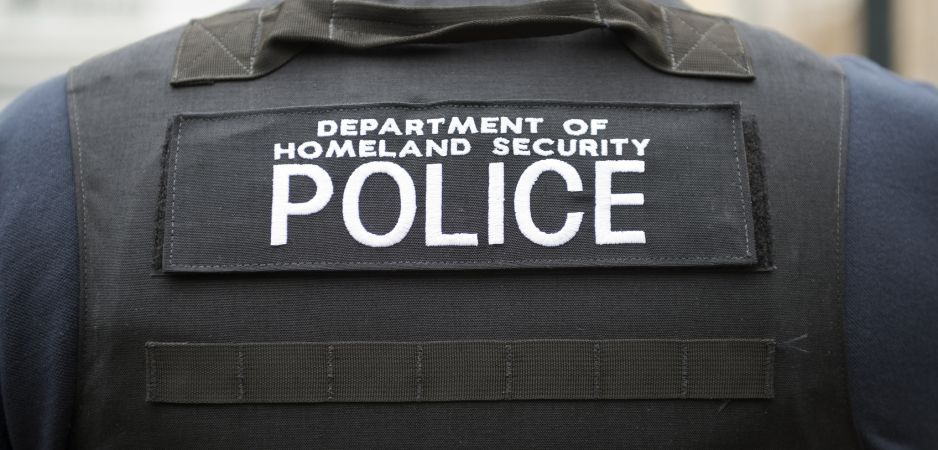Amid an election full of outlandish statements, Twitter spats and ad hominem accusations, many important problems facing America have failed to grace headlines. In the second of a five-part series exploring issues ignored during the 2016 presidential election season, Ryan J. Suto addresses the danger of continuing the implementation of the CVE program at the federal level. Click here for part 1.
The Obama administration recently led the federal government in pursuing a discriminatory and ineffectual anti-terrorism policy that, at best, adds little to present efforts and, at worst, could alienate and disenfranchise an entire segment of the American population. The next president will inherit this policy, Countering Violent Extremism (CVE), facing the decision to abandon or maintain it.
CVE is a federal program with the stated goal of providing planning and funding to support the community-based recognition, reporting and, ultimately, prevention of the root causes of violent extremism. In 2015, the White House launched the program with a summit to coordinate efforts with both local and international leaders. As part of CVE, the Federal Bureau of Investigation (FBI) has begun to train students, teachers and other community members with the hope that they could recognize and prevent violent extremism.
The program’s framework emphasizes cooperation with local officials and has thus launched three pilot programs: one in Boston, another in Los Angeles and the last in Minnesota. Speaking on the subject, George Selim, the head of the new office of community partnerships within the Department of Homeland Security, admitted, “There is no uniform agreement on the best way to tackle terror recruitment and the risk of violence on American soil”—the motivating justification behind the local focus of the program. Despite this recognition, CVE, like the Transportation Security Administration’s SPOT program, is based on no scientific evidence regarding methods of detecting potential extremists or terrorists.
Nonetheless, earlier this year, Senator Cory Booker introduced a new bill to “authorize the Secretary of Homeland Security to establish university labs for student-developed technology-based solutions for countering online recruitment of violent extremists.” More recently, Representative Todd Young introduced a bill to ensure the CVE program is effective via an oversight group. While neither bill has advanced to the president’s desk for a signature, it is clear that both parties have taken up CVE as a noble policy model for bureaucratic growth.
What CVE gets wrong
There are at least three policy-based deficiencies of the Countering Violent Extremism program.
First, CVE creates more national security bureaucracy: America now has yet another office, here within the Department of Homeland Security, with the goal of preventing terrorism within our borders. Since the passage of the USA PATRIOT Act in 2001, the federal government has been endeavoring to improve coordination among federal agencies and between them and local law enforcement on this singular subject. While overlapping competencies may have the aim of eliminating holes in coverage and jurisdiction, the funding diverted for CVE would be better spent improving the accuracy and efficacy of existing efforts.
Second, CVE inherently assumes that either local community leaders can be effectively trained on detecting future terrorists, or that communities presently turn a blind eye toward potential extremists. However, terrorism research routinely concludes that there is no known “terrorist profile,” single set of indicators of radicalization, nor a unitary path toward violence that local leaders could be taught. Indicators are not simple enough to present during a workshop and expect results without large numbers of false positives. Moreover, there is no evidence whatsoever that American Muslim communities have knowingly harbored any past active or potential terrorists.
Third, while CVE emphasizes coordination with local actors, the program itself is still top-down, instead of originating from grassroots efforts. The messaging of this and related federal government anti-terrorism programs, for example, is comical. Catchphrases such as “Think Again, Turn Away” and “Don’t Be a Puppet” ring hollow when originating from a government, viewed as either secular or Christian, that routinely guns down Muslims via drone strikes or detains them for decades without trial.
From that perspective, how can the US federal government claim authority regarding religion, compassion or morality? It is certainly a hard sell to disaffected youth, especially when millennials are already skeptical of government institutions. In contrast, efforts originating from Muslim communities themselves have been shown to have much greater promise.
Long-term dangers of CVE
Aside from the obvious potential for illegal demographic profiling—that is, lowering evidentiary requirements to detain or surveil an individual based on his or her race, ethnicity or religion—CVE presents other dangers beyond mere policy imprudence. Indeed, the federal government’s past flirtation with interning and deporting Middle Easterners in the US—even American citizens—has most recently been embodied by Republican presidential nominee Donald Trump. The heightened paranoia around anyone who “appears” Muslim in the wake of the 9/11 attacks and the rise of Daesh (Islamic State) has already led to a dizzying increase in hate crimes in the US against Muslims.
Further, a troubling theme throughout the implementation of CVE programs is dependence upon educators for detecting potential extremism early. The US Attorney’s Office in Boston seeks to “enhance awareness within K-12 and higher education regarding behavior assessment” as part of that area’s CVE initiative. Educators should not be tapped as assistants for law enforcement, but instead should concentrate their valuable and stretched energies on providing classroom education, rather than policing. Concern regarding the program’s emphasis on educators is not abstract: Recently, a 12-year-old Long Island boy was forced by school officials to confess plans of terrorism.
These episodes of prejudice and backlash will only be exacerbated by the message sent by the CVE program: That American Muslims are a group to be feared and monitored.
This, in turn, further reminds these already-marginalized communities that the government views them as dangerous outsiders, insufficiently integrated with questionable loyalty, impeding members from feeling fully woven into the larger American fabric. “If the government does not consider me sufficiently American,” one might wonder, “how can I view myself as belonging and welcome?”
If CVE is allowed to continue and expand in its current iterations, it has the potential alienate a generation of American Muslims who have otherwise been an integral part of American society. The program stands to create more problems than solutions.
An alternative path
While CVE has a great number of deficiencies, its existence should not be in vain—it can prompt the question: What can be an alternative policy that is oriented toward reducing violent extremism?
Anthropologist Dr. Scott Atran, director of research in anthropology at France’s National Center of Scientific Research, presents a path toward decreasing rates of extremism, backed by research:
1) Offer youth something that makes them dream of a life of significance through struggle and sacrifice in comradeship;
2) Offer youth a positive personal dream, with a concrete chance of realization;
3) Offer youth the chance to create their own local initiatives.
This alternative approach emphasizes the belonging that is created best in small groups, as opposed to federal- or even state-level, face-less programs. This interpersonal, communal belonging is best supplemented by a global, or higher, purpose, similar to that which American millennials more broadly have been seeking.
Thus, a successful alternative policy to CVE involves all Americans, not just those from targeted minority groups—both to reinforce inclusion and in the recognition that non-Muslims compose the vast majority of terrorists in the US—and involves meaningful activities that bring forth real contributions to society. Instead of encouraging community members to monitor each other for suspicious behavior, the next president should expand and invest in more civic service programs such as AmeriCorps and Peace Corps, which already exist to create small communities, connect individuals to greater causes and engender feelings of inclusion and belonging.
By strategically addressing problems that exist by utilizing productive and inclusive solutions, the next US president can help to empower a generation—regardless of ethnicity or religion—instead of divide Americans against themselves.
The views expressed in this article are the author’s own and do not necessarily reflect Fair Observer’s editorial policy.
Photo Credit: Joel Carillet
 We bring you perspectives from around the world. Help us to inform and educate. Your donation is tax-deductible. Join over 400 people to become a donor or you could choose to be a sponsor.
We bring you perspectives from around the world. Help us to inform and educate. Your donation is tax-deductible. Join over 400 people to become a donor or you could choose to be a sponsor.
Support Fair Observer
We rely on your support for our independence, diversity and quality.
For more than 10 years, Fair Observer has been free, fair and independent. No billionaire owns us, no advertisers control us. We are a reader-supported nonprofit. Unlike many other publications, we keep our content free for readers regardless of where they live or whether they can afford to pay. We have no paywalls and no ads.
In the post-truth era of fake news, echo chambers and filter bubbles, we publish a plurality of perspectives from around the world. Anyone can publish with us, but everyone goes through a rigorous editorial process. So, you get fact-checked, well-reasoned content instead of noise.
We publish 2,500+ voices from 90+ countries. We also conduct education and training programs
on subjects ranging from digital media and journalism to writing and critical thinking. This
doesn’t come cheap. Servers, editors, trainers and web developers cost
money.
Please consider supporting us on a regular basis as a recurring donor or a
sustaining member.
Will you support FO’s journalism?
We rely on your support for our independence, diversity and quality.






